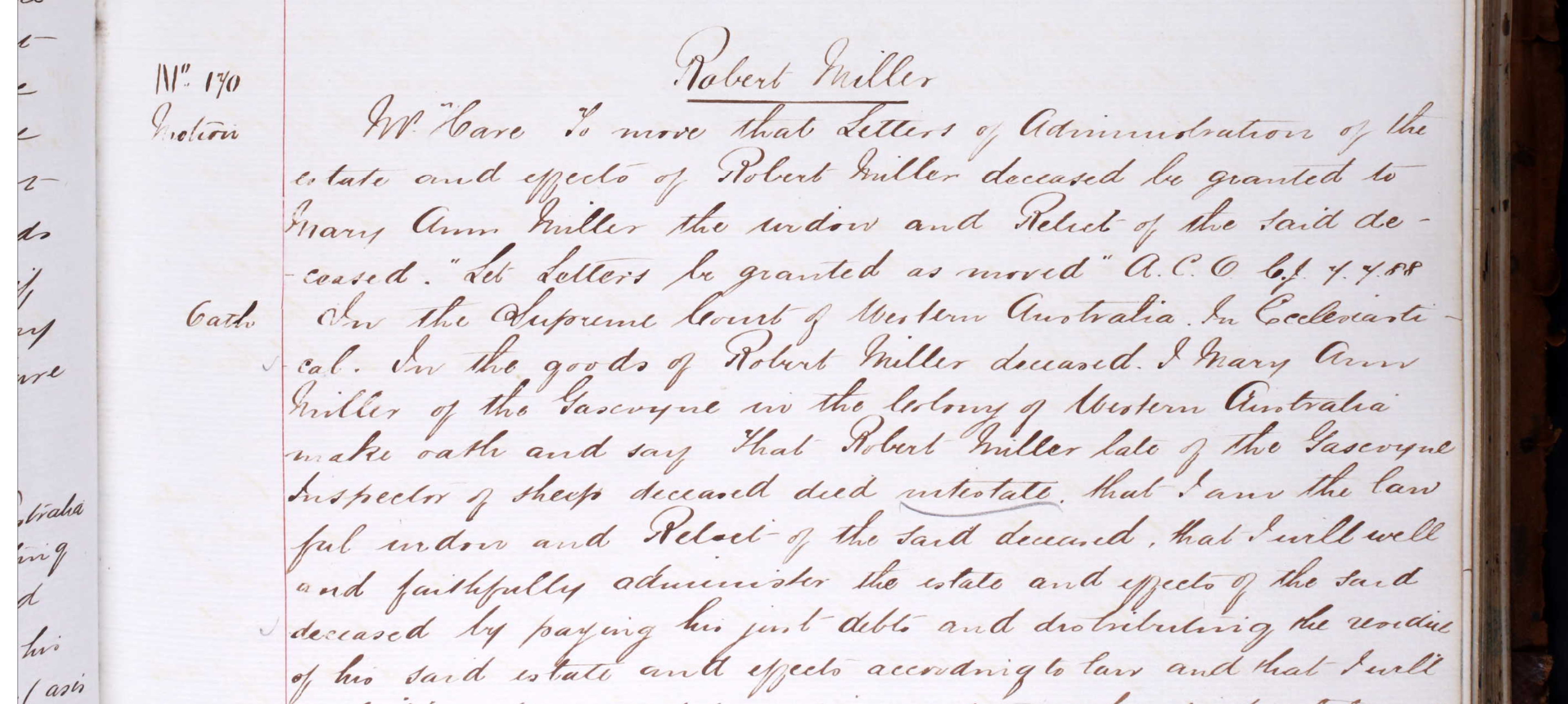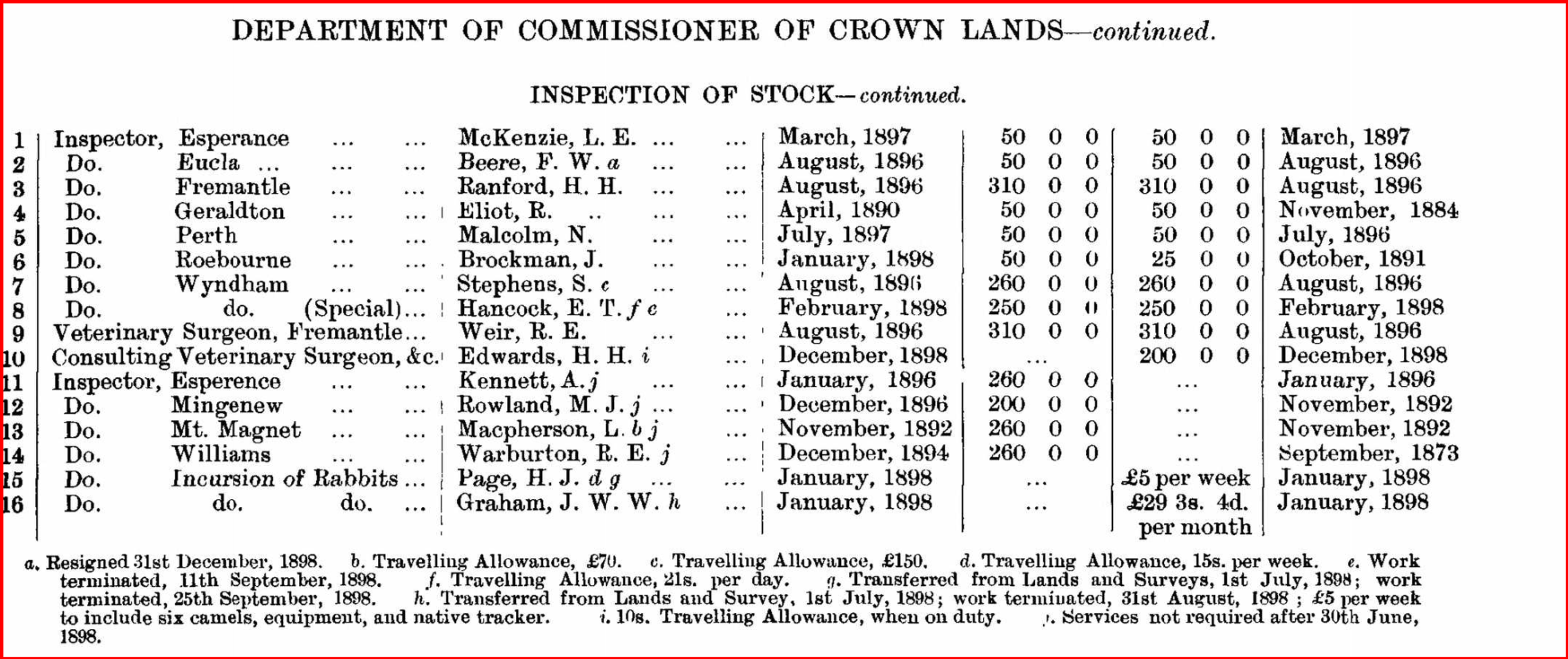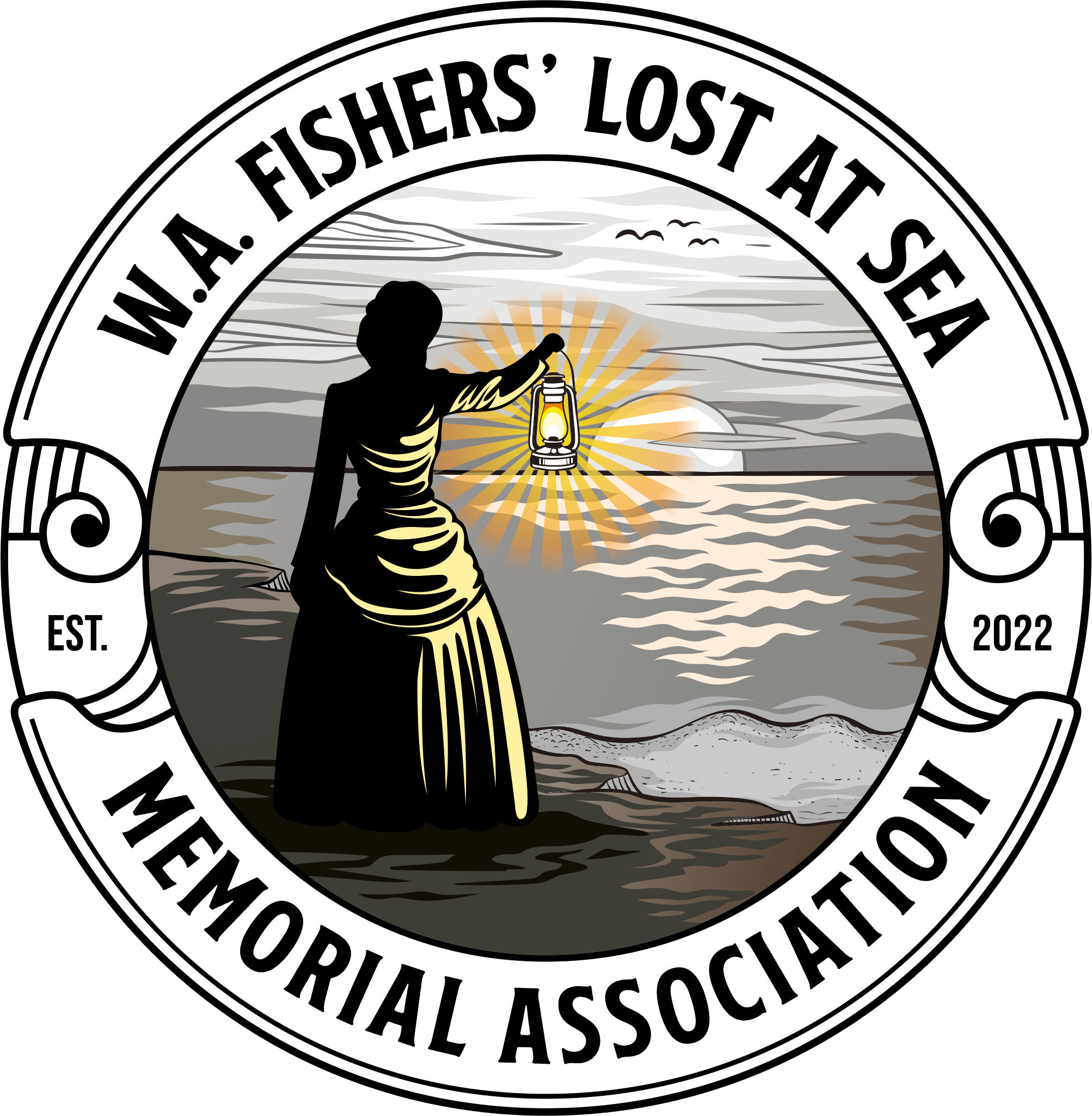Ada May
Vessel Name: Ada May
Robert Miller
Johnny Friday
Drowned when boat capsized; bodies not recovered
3 March 1888

Administration letter

Inspectors role
The Ada May was a three-ton cutter. She spent the first stage of her career as a pearling lugger, which is why she was built. She was never registered, so her details are not able to be confirmed.
Ada May was purchased by Julius Brockman who was both a pearler and a pastoralist. Ada May became a lugger with her lay time spent transporting whatever her owner's stations required.
Julius owned properties on the coast at Minilya and Warroora (Now known as Cardabia) in the Gascoyne region. He had helped pioneer Roebourne and the Kimberley regions.
Julius was born George Julius Brockman on 2 January 1850 at Middle Swan. He was the third of four sons born to Robert James Brockman and Elizabeth Elliott Walcott. Robert had emigrated from Kent, England. Elizabeth was born in Guyana. Their sons were all born in Western Australia. Julius does not appear to have married.
On 3 March 1888 Julius took the cutter from Carnarvon, heading 129 kms north to Warroora. On board was Rober Miller, Johnny Friday, Peter and one other crew member. Johnny Friday was an Aboriginal crew member who had worked for Julius for some time. Peter and the unnamed deckhand were Filipino men who came from the pearl grounds with Ada May. They towed a dinghy behind them.
Robert Miller was the Agricultural Inspector. In the past couple of years he had been stretched at work due to a widespread and virulent sheep scab, which kept him inspecting stock through the Gascoyne and Pilbara regions. He had become unwell and taken extended leave from work to spend time on board Ada May and assist Julius on his properties. At 48, he was tired and in need of a change. Robert and Julius had been friends for many years.
Robert was well known in the northwest and was popular with pastoralists and town folk alike. He was married to Mary Ann Payne in 1874 at Glengarry, and they had three children. Carnarvon was a small community. His wife’s sister was the schoolteacher, and his ties to the area were strong.
Ada May arrived at Warroora safely, leaving on 6 March for Point Cloates at 12.15pm. They planned to anchor at Yalobia Bay overnight. The Pass is 100 miles north of Carnarvon and four miles offshore. They entered Tuckey Pass at 4.30pm, at which time the tow rope to the dinghy parted leaving it adrift.
Peter was at the helm, and he brought it down to bring the boat’s head to the wind, intending to recover the dinghy. She luffed broadside on to the sea. A dumb roller struck her and filled her with water. A second wave washed over the decks and swept all four men into the water.
When they surfaced, Julius threw a rope to Robert so he could climb back on board. Another wave washed him overboard immediately.
Julius and Peter climbed back aboard Ada May and they stripped off their outer clothing as the boat sank. They had dived into the water leaving only the mast visible above the waterline.
Miller had struck out for the shore, and he and Johnny were swimming near each other. Julius and the Filipino men swam after them, taking some floating boards and an oar with them. They caught up to Robert and gave him the largest board they had to help him stay afloat. They returned to the where the boat had sunk and found more boards for themselves to help them reach the beach, a distance of four miles.
Julius reached the shore after dark, exhausted. He remained on the beach that night, too tired to move. The next morning, when there was no sign of his crew, he set off for Yalobia Well, two miles away.
At the well he was a man’s tracks, and remained there for a while hoping to see one of his crew was alive. When no one appeared, he struck out for the Warroora Well, which was a walk of 20 miles to the south.
Julius walked with bare feet. He had cuts and bruises from being washed against the reef no his way to shore. At the well he found his two Filipino crewmen. There was also an Aboriginal man unknown to them, who agreed to go to the station and alert the owner of their plight. It was a further 19 miles and Julius was not capable of walking further.
The Aboriginal man made the station in good time, and they immediately sent help to the well, and commenced a search of the coast for the two missing crew members. Julius held grave concerns for Robert and Johnny as none of the survivors had seen any other tracks or signs that the men had made the shore.
The station sent word to the authorities in Carnarvon and the Commissioner of Police was notified by Police Constable William Turner via telegram of the sinking of the Ada May. On 15 March police left Carnarvon to continue and extend the search for Robert and Johnny.
A piece of board was found on the beach, which was identified as the board last seen with Robert. An oar was found later, too. Of the two missing men there was no trace.
In Carnarvon the school was closed when the news reached them that Robert had drowned.
He had died intestate which caused some problems for Mary Ann. Probate was completed in July.
Julius never recovered from his ordeal. In 1889 he took up the government position of Agricultural Inspector. He sold his properties and gave up pearling. It was too much for him. After a few years, he retired to a property at Guildford. He died on 29 August 1912 in Geraldton and was buried at the Apex Park Pioneer Cemetery.
